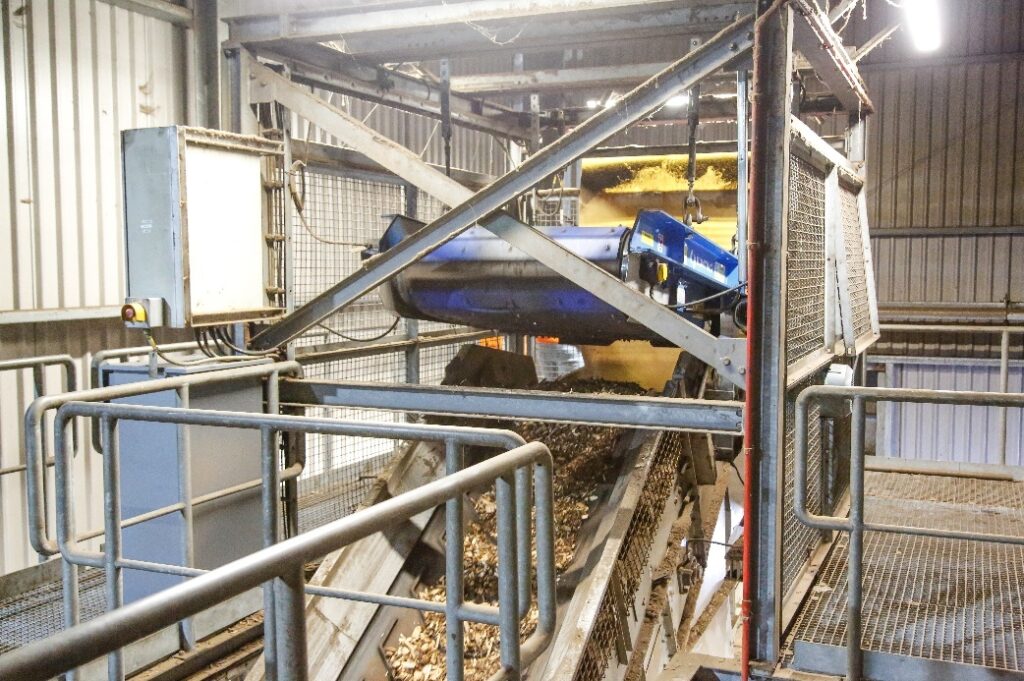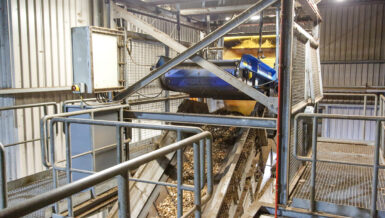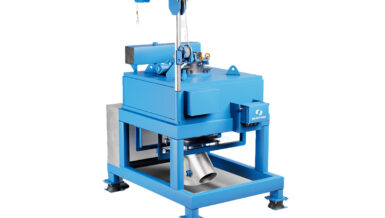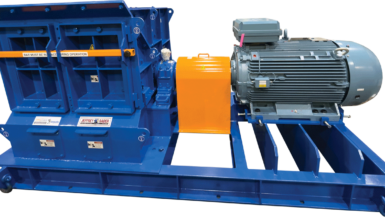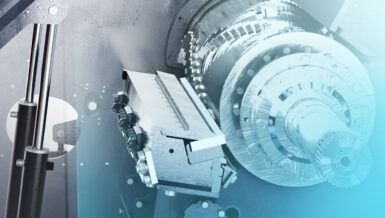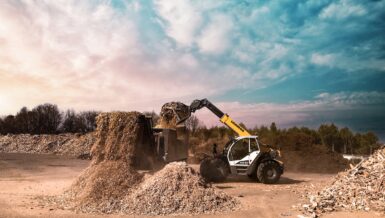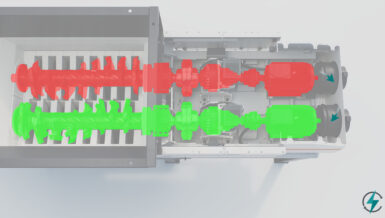What is an Electromagnetic Overband Magnet?
Electromagnetic overband magnets (Electro overband magnets) use a charged coil to generate a strong magnetic field onto a conveyor, lifting ferrous metals from the material stream and discharging them via a self-cleaning belt. They are ideal for high-capacity, high-burden applications where deep field penetration and maximum tramp metal recovery are required.
Bunting offers three primary electromagnetic overband systems:
| Model | Cooling | Key Feature |
| OCW | Oil-Cooled | Deep magnetic field and sustained duty cycle |
| ACW | Air-Cooled | Strong performance without oil-related maintenance |
| ElectroMax | Air-Cooled | Compact and lightweight with high-intensity field strength |
Air-cooled vs Oil-cooled: What’s the Difference?
1. Cooling Method
- Oil-cooled (OCW) systems use circulating oil to cool the internal coil. This allows for a wider range a working ambient temperatures, making them ideal for the deepest burden depths and widest belts.
- Air-cooled (ACW, ElectroMax) systems rely on airflow to manage temperature. These designs eliminate oil maintenance and are typically lighter and easier to install.
2. Application Suitability
| Application Type | Model | Reason |
| High-burden, deep suspension, large tramp metal | OCW | Provides a deep magnetic field and handles continuous duty with high power output |
| Mid-range conveyor lines with moderate burden | ACW | Reliable air-cooling suitable for belt widths up to 2,000 mm |
| Mobile crushing or space-limited applications | ElectroMax | Compact and 25% lighter than conventional models, with a high-intensity air-cooled field |
When to Choose Air-Cooled

Advantages:
- No oil system, which simplifies maintenance
- Lighter weight, ideal for mobile or retrofit systems
- Delivers strong magnetic power with reduced environmental risk
Use Air-Cooled If:
- Suspension height is moderate, typically under 500 to 600 mm
- Installation is on an existing structure with space or weight constraints
- Tramp volumes are moderate and you prefer minimal system upkeep
When to Choose Oil-Cooled

Advantages:
- Maximum field strength at greater depths
- Designed for wide belts over 2,000 mm and heavy tramp metal
- Suitable for high-temperature environments
Use Oil-Cooled If:
- A deep magnetic field is needed to extract tramp through high burden
- Suspension height is 600 to 800 mm
- Operation runs 24/7 under heavy load or in harsh conditions
When to Choose the ElectroMax
An ElectroMax overband magnet installed in a biofuel plant
Advantages:
- High-intensity magnetic field in a compact, lightweight frame
- Air-cooled design with no oil system, reducing complexity and maintenance
- Ideal for mobile equipment or retrofit projects with limited structural capacity
- Exceptional power-to-weight ratio, removing even stubborn tramp metal efficiently
Use ElectroMax If:
- The installation is on mobile crushers, screens, or modular conveyors
- You require strong magnetic separation but can’t accommodate a heavy oil-cooled system
- Suspension height is limited, and deep field strength is still needed
- Your site demands quick installation and minimal ongoing maintenance
- You’re replacing or upgrading a permanent magnet and need higher performance in the same footprint
Practical Selection Factors
To ensure optimal system performance, evaluate:
- Suspension height, the distance from magnet face to belt
- Burden depth, or the material height on the belt
- Tramp metal characteristics, including size, frequency, and shape
- Belt width and conveyor speed
- Installation constraints, such as space, weight, or structural load
- Maintenance capabilities and service access at your site
- Ambient temperature, particularly in extreme climates.
- Altitude
Final Thoughts
Your overband magnet choice should reflect actual site conditions rather than default specs. Air-cooled electromagnetic models like the ACW and ElectroMax offer strong tramp removal performance with simple installation and maintenance. For deep burden removal, wide conveyors, and large tramp fragments, the OCW oil-cooled system provides the magnetic depth and power needed for uninterrupted protection.
Our team at Bunting can help you configure the ideal solution for your operation based on material flow, conveyor specs, and the tramp metal profile.
Note: This article focuses exclusively on electromagnetic overband magnets. For passive, no-power solutions, refer to our Permanent Magnets.

